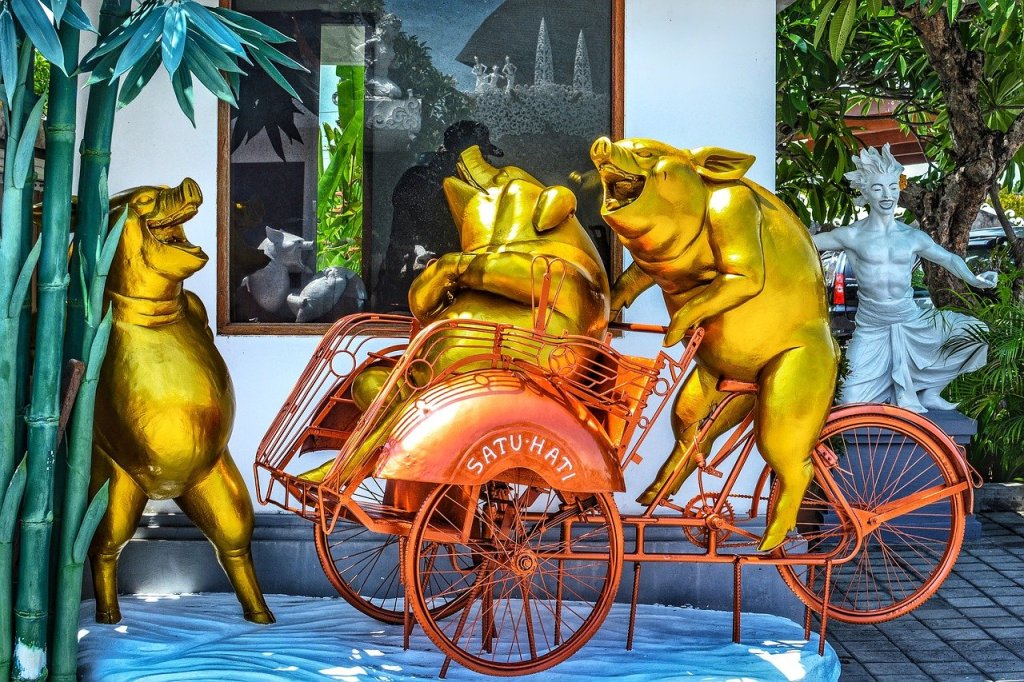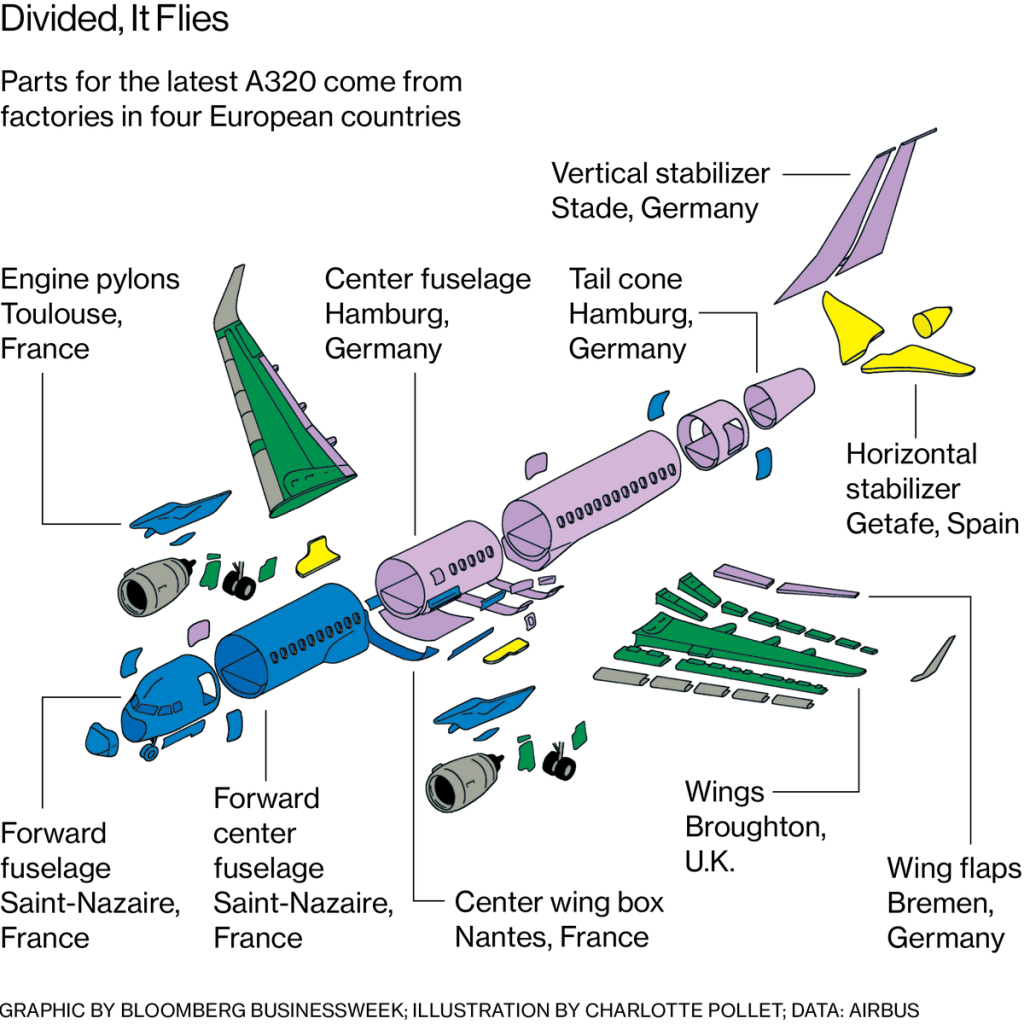The Theory of Comparative Advantages is one of the foundational topics taught to new disciples to Economics. Especially in our highly globalised context today, it is also one of the best-known and cited.
Nonetheless, like many theories in Economics, the multi-faceted considerations and contexts belying international trade mean that the Theory of Comparative Advantages is subject to limitations, and can even cause serious problems to countries.
This contrarian piece about comparative advantage is meant to serve as a counterbalance to the (in my opinion) overly-benign view of the theory in “A” level Economics.
The Theory of Comparative Advantage
For the uninitiated, a properly longer and more detailed explanation behind the theory can be found on Wikipedia. Also, at the risk of sounding patronising, it is also expounded in my set of free notes available for reading online here.
A quick recap: The Theory of Comparative Advantage asserts that, under certain sets of conditions, countries, even of differing sizes, can mutually benefit from trade through specialisation in the production of goods and services that they have comparative advantages in.
A few short notes are in order:
- When a country is said to have a comparative advantage in the production of a good, it is able to incur less opportunity cost in producing that good compared to the other country(s);
- A country is also said to benefit from trade if its consumption possibility expands as compared to pre-trade.
The theory’s primary attractiveness to trade proponents lie with the supposed ability of small countries to interact well with large ones: A feel-good story of David co-existing with Goliath. Unfortunately that’s not how it pans out exactly, in the real world.
Some goods are more equal than others.

A divide exists between developed and developing countries. And a typical differentiating characteristic lies with the mix of economic activities, with developing countries often being associated with less need for advanced capital goods, such as in agriculture, and manufacturing “low-end” products.
On the other hand, economic activities associated with developed countries tend to incorporate higher mixes of more advanced capital-intensive manufacturing (e.g. precision tools) and services.
It is plausible to utilise such observation to justify that comparative advantage must be at least empirically viable, since the patterns of trade generally reflect the predictions of the theory (countries with more expensive labour and greater capital stock should produce and export more goods requiring more advanced production techniques).
Unfortunately this is too simplistic. For one, goods and services are not made, and do not pay their producers equally. At a fundamental level, borrowing Marxist language, with more steps in production and increasing complexity, there will exist greater scope for human ingenuity to induce higher price mark-ups (profit).

Think about the aspirations of people in the developing country and whether they would actually like to try for a hand at greater profits. To ask rhetorically, is it definitely true that developing countries export per the dictation of comparative advantages out of choice?
The story only gets worse. As I had written some years ago, the agriculture and natural resource sector also experiences high level of price fluctuation. With evidence suggesting that uncertainty to revenue streams significantly stunts long term development, there is little to believe that developing countries would see greater specialisation in primary products as a development saviour.

In recognition of such problems, governments have been known to intervene in the market to influence production patterns in favour of higher value-add goods and services. In particular, much has been said and written about the East Asian countries’ economic policies.
Disclamier: This flies somewhat in the face of prevailing wisdom on utilising existing comparative advantages.
Uneven and over-exploitation of resources.
A key tenet to the Theory of Comparative Advantage is specialisation – countries should devote more resources to producing goods that they can produce more competitively.

The broad idea behind cooperative specialisation on a large scale with trade, is that it enables a global increase in output with more to go around. Unfortunately a couple of less desirable side effects happen alongside this ideal.
The first is fairly obvious – increased production of goods can only be achieved with more raw materials and factor inputs. Cue the ugly side to increased material consumption, what with greater exploitation of resources, renewable or not.
To rub salt to wound, the distribution of most natural resources are unevenly distributed globally. Particularly in the case of developing countries where resources are abundant, the rush to tap further into resource riches have resulted in the Dutch Disease.
If that’s still not bad enough, the true costs to production of goods are not made equal as well, with some being more problematic than others. Mining for example often leads to destruction of the immediate environment, and tailings which are often unconvincingly disposed of, if at all.

Other industrial activities are so dangerous that they are by no coincidence located in countries that feature weaker regulations. India has already suffered 2 tragically high-profile gas-leak incidents at Bhopal and Visakhapatnam, but it may well still be business as usual.
It is one thing to extol the virtues of tapping comparative advantages for the exam, but another to understand that it calls for higher and not necessarily sustainable increase in resource burden, that is also unevenly distributed to boot.
Consumption patterns differ.
Our analysis of the problems potentially caused through the utilisation of comparative advantage has been depressing up to this point. Fortunately, the next one is decidedly benign by nature, but no less significant in highlighting shortcomings to the Theory of Comparative Advantage.
The proof that utilising respective comparative advantages can result in better outcomes for the countries involved, lies with the simplistic assertion that having a quantitatively superior consumption possibility is indeed better.
A key implicit assumption to ensure this holds true is that consumption patterns should be similar across countries. Several limitations then becomes apparent with the explicit framing of such assumption.
Consider the existence of intra-product trade (i.e. countries import and export similar goods). Let’s take the example of locally-made cars in Malaysia (e.g. Proton and Perodua) versus other car makes that are imported.
Rather than comparative advantages, the more convincing explanation appears to be that consumers care about quality, and variety of goods and services. A certain Uncle Khong can probably tell you more about the cars that he gets his hands on in Malaysia!
Going back to the theory’s implicit assumption of shared consumption patterns across countries, you could still argue that even if the countries’ citizens fail to appreciate the quantitative improvement to consumption possibilities, this would simply be a case of being no worse-off.
In reality, it is not difficult to imagine diminishing utility as consumption for a given goods combination increases, due to perceived lack of product quality and variety by consumers. At best, it is likely that the gains in trade asserted by the theory at face value may be overstated.
In more extreme case, it is also possible for such negative effects to grow to such extent that further quantitative improvement to consumption may even reduce welfare altogether.
Transportation costs and risks to supply chain
Another important limitation to the explanatory powers of the theory lies with the lack of consideration for transportation constraints and supply chain risks.
In the case of the former, distance certainly plays a role in encouraging/discouraging trade, especially for perishables. At times also, geographical or even political constraints may cause trade routes to incur additional costs for travel.
As for the latter, risks to supply chains have often been cited as considerations for vertical mergers between firms.
The same rationale applies to countries Notwithstanding coercion or even annexation (the horrors), countries may recognise chokepoints to their supply chains and interact with their trading partners accordingly by:
- Either “bringing home” that processing/production step of the good; or
- Pursuing diversification of purchase/production of the good with other countries.
High profile recent examples to how such decisions are informed can be found with the USA’s concerns about computer chip availability, and the week-long closure of the Suez canal last month.

I am not bashing for the sake of it.
I should state categorically that it would be unfair to expect the theory, in its basic form, to introduce all of these in a very important paradigm-changing concept. We should recognise rather that knowledge tends to be cumulative and much of it incremental.
The “A” level Economics version of the theory has indeed received many important extensions to deal with these known limitations. And its premise in the use of comparative advantage to explain the virtues of trade is still very much relevant today.
What are some other limitations to the Theory of Comparative Advantage that you know of? Share it with us in the comments section below!

I blog often and I genuinely thank you for your information. This article has truly peaked my interest. I will take a note of your website and keep checking for new information about once per week. I subscribed to your RSS feed too.
LikeLike
An impressive share! I’ve just forwarded this onto a coworker who was doing a little homework on this. And he actually ordered me breakfast because I discovered it for him… lol. So let me reword this…. Thanks for the meal!! But yeah, thanks for spending the time to discuss this subject here on your web page.
LikeLike
Everything is very open with a clear clarification of the issues.
It was definitely informative. Your site is very helpful.
Thank you for sharing!
LikeLike
Peculiar article, just what I needed.
LikeLike
We’re a group of volunteers and opening a new scheme in our community.
Your website provided us with valuable information to work on. You have done a formidable job and our entire community will be thankful to you.
LikeLike
Hello there, just became aware of your blog through Google, and found that it’s really informative. I’m gonna watch out for brussels. I’ll be grateful if you continue this in future. A lot of people will be benefited from your writing. Cheers!
LikeLike
Major thankies for the article. Much obliged.
LikeLike
Aw, this was a really nice post. Taking a few minutes and actual effort to generate a great articleÖ but what can I sayÖ I procrastinate a lot and never seem to get nearly anything done.
LikeLike
Very informative blog post.Really thank you! Really Cool.
LikeLike
I am really impressed with your writing skills as well as with the layout on your blog. Is this a paid theme or did you customize it yourself? Either way keep up the nice quality writing, it is rare to see a nice blog like this one these days..
LikeLike
A motivating discussion is definitely worth comment. There’s no doubt that that you ought to publish more on this subject, it may not be a taboo matter but usually people do not discuss such topics.
LikeLike